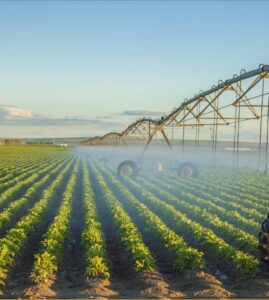
By:Hertha Ekandjo and Anna-Liisa Paulus
The agriculture sector in Namibia has exhibited notable growth over the years, overcoming challenges such as drought, limited investment, and financial support from the government.
The sector holds the potential to significantly reduce the country’s high unemployment rate if it is well-maintained and adequately funded.
Despite the progress observed in recent years, agricultural production remains relatively low. Namibia still heavily relies on South Africa for a significant portion of its agricultural produce, with that country accounting for over 97% of most agro-processed products imported into Namibia.
Conversely, Namibia exports a modest 63 tons of tomato sauce, olive oil, and spices annually, valued at approximately N$1.6 million on average.
Namibia imports an average of 54,570 tons of agro-processed products annually, with an estimated value of over N$1.5 billion.
These imports include items such as juice, frozen vegetables, frozen potato chips, jams, olive oil, spices, and other dried vegetables.
On the domestic front, research indicates that Namibia produces over 9,000 tons of agro-processed products valued at approximately N$162 million annually.
These products include tomato sauce, chilled vegetables (cut, sliced, and diced), and juice (excluding exports).
Agriculture Economist ThinaMoyo highlighted that, despite Namibia’s arid climate, the country has been successful in cultivating commodities like horticulture through subsidised programs initiated by the Ministry of Agriculture, Water, and Land Reform. Moyo emphasised that Namibian producers now comprise a mix of both commercial and small-scale farmers, a sign of sectoral growth.
Moyo pointed out that many farmers have benefited from government subsidies, contributing to the local food supply and market.
She mentioned that Namibia now produces locally grown items such as tomatoes, lettuce, cabbage, carrots, and potatoes, which was not the case a few years ago, indicating substantial agricultural growth.
Regarding crop cultivation, Moyo noted continuous growth and the potential for further expansion, given the presence of irrigation schemes and opportunities like the Green Scheme project, despite occasional challenges.
“Producing this was not the case a few years ago and agricultural production has grown. The crop sector has shown growth overtime and it can potentially grow more as Namibia has irrigation schemes and the green scheme is the one Namibia can fight for even if it has challenges there is growth there like mackerel and blueberry coming project and new innovation coming in the n crop sector, so it is a growth,” she explained.
However, Moyo acknowledged that the livestock sector faces greater vulnerability to drought compared to the crop sector, resulting in substantial livestock losses.
Prolonged droughts have led to livestock deaths, including cattle, goats, sheep, and other types, due to the scarcity of fodder in rangelands. Additionally, the quality of range land has deteriorated over time due to drought conditions.
According to a study by the Agronomic Board of Namibia, actors in the agro-processing sector face challenges related to packaging, labelling, supply contracts, pricing, marketing, transportation, cold storage facilities, quality assurance, and human capacity. These aspects are critical for success in the agro-processing sector.
Moyo emphasised that transforming the desert into arable land to achieve food self-sufficiency would require significant investments.
She highlighted the need for a coordinated effort involving government expenditure and private sector investments, emphasising the importance of aligning these investments to promote productivity and production growth.
Moyo also pointed out a disconnect between private sector and government investments in the agricultural sector, calling for better coordination and collaboration to maximise growth potential. She referenced a World Bank report indicating improvements in food security and reduced hunger in Namibia, suggesting that the country is making progress toward greater food security.
Namibia’s global hunger index, at around 18% to 19%, signifies gradual progress towards enhanced food security, according to Moyo.
This progress underscores the country’s efforts to develop its agricultural sector and support small-scale farmers, bringing Namibia closer to achieving food security.









Comments